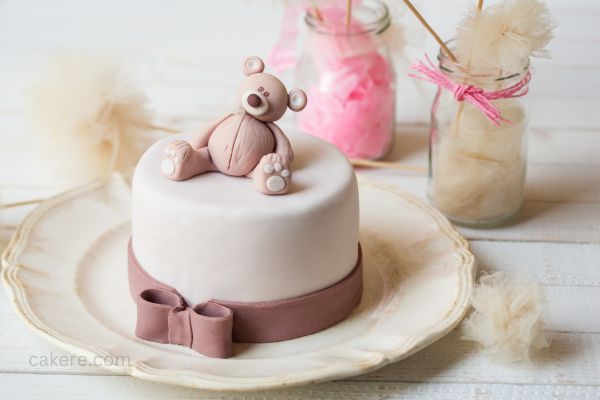When it comes to cake decoration, fondant has become an increasingly popular choice for professional bakers and home cake enthusiasts alike. Fondant allows for intricate designs and a polished finish that can make any cake look like a work of art. However, many people wonder, “What does cake fondant taste like?

What is Cake Fondant?
Cake fondant is a pliable, sugar-based dough-like substance used for covering cakes and creating decorative elements. It is typically made from sugar, water, and glycerol or other edible gums.
The resulting dough can be rolled out and draped over cakes to achieve a smooth, flawless surface, providing a canvas for intricate cake decorations.
The Ingredients of Cake Fondant
To make fondant, bakers usually mix confectioners’ sugar with water and glycerol or glucose. Some recipes may also include gelatin or corn syrup for added elasticity.
These ingredients work together to create a malleable and easy-to-work-with dough that can be shaped into various designs.
The Taste and Texture of Cake Fondant
The taste of cake fondant is a subject of much debate among cake lovers. Fondant itself is very sweet, with a sugary flavor that some people enjoy.
However, others find it overly sweet and might prefer other cake coverings like buttercream or cream cheese frosting.
The texture of fondant is smooth and slightly chewy, reminiscent of a soft candy.
Pros and Cons of Using Fondant
Pros:
- Professional Look: Fondant provides a polished, smooth finish, perfect for formal events and weddings.
- Design Versatility: It allows for intricate designs and detailed decorations that are challenging to achieve with other frostings.
Cons:
- Sweetness: The high sugar content might be overpowering for some individuals.
- Texture: The chewiness of fondant may not be preferred by everyone.
Tips for Enhancing the Taste of Fondant
To improve the taste of fondant, bakers can incorporate various flavorings such as vanilla, almond extract, or citrus zest.
Mixing these flavors into the fondant can help balance out the sweetness and add a delightful taste to the overall cake.
Fondant Flavors and Variations
Fondant comes in an array of flavors, allowing bakers to get creative with their cake designs.
From classic vanilla and chocolate to more adventurous flavors like lemon, raspberry, or coconut, the choices are vast. These variations can cater to different palates and complement the cake’s flavors.
Can You Eat Cake Fondant?
Yes, you can eat cake fondant. While some people choose to peel it off before eating the cake, fondant is entirely edible.
However, as mentioned earlier, the sweetness and chewy texture might not be to everyone’s liking.
How to Remove Fondant from a Cake
If you prefer not to eat the fondant, removing it is simple. Gently lift the fondant from the cake’s surface, taking care not to damage the cake underneath. The remaining cake can be enjoyed with the frosting or filling of your choice.
Fondant vs. Buttercream: A Comparison
Fondant and buttercream are two popular cake coverings, each with its own set of advantages and disadvantages.
While fondant offers a sleek finish and intricate designs, buttercream provides a creamier, softer texture and a more buttery taste.
The choice between the two depends on the desired aesthetics and taste preferences.
Decorating Cakes with Fondant
Working with fondant allows bakers to unleash their creativity and create stunning cake designs.
From handcrafted flowers and delicate lace patterns to 3D figures and sculpted elements, the possibilities are endless. Fondant opens up a whole world of cake decorating opportunities.
Fondant Artistry and Creativity
Cake decorators who specialize in fondant artistry are true artisans. Their ability to transform cakes into beautiful masterpieces is awe-inspiring.
The intricate details and precision required in fondant artistry make it a highly respected skill in the baking community.
The Popularity of Fondant Cakes
Fondant cakes have gained immense popularity, particularly in celebratory events like weddings, birthdays, and anniversaries.
The allure of a beautifully designed cake that not only looks impressive but also tastes delightful has contributed to the rise of fondant’s fame.
FAQs
Yes, you can make fondant at home using simple ingredients like confectioners’ sugar, water, and glycerol. There are numerous recipes available online to guide you through the process.
Fondant-covered cakes can be kept at room temperature in a cool, dry place. Refrigeration is not necessary, as it might cause condensation and affect the fondant’s appearance.
Absolutely! Fondant can be easily colored using gel food coloring. Knead the coloring into the fondant until the desired shade is achieved.
Fondant is versatile and can be adapted to cover cakes of various shapes and sizes. Its pliability allows it to conform to different contours.
Conclusion
cake fondant is a versatile and popular cake covering known for its polished appearance and intricate designs.
While its taste might not appeal to everyone due to its sweetness and chewy texture, the artistry and creativity it enables in cake decorating cannot be denied.
Whether you love the taste of fondant or prefer other frosting options, there’s no denying the visual impact of a beautifully designed fondant cake.
